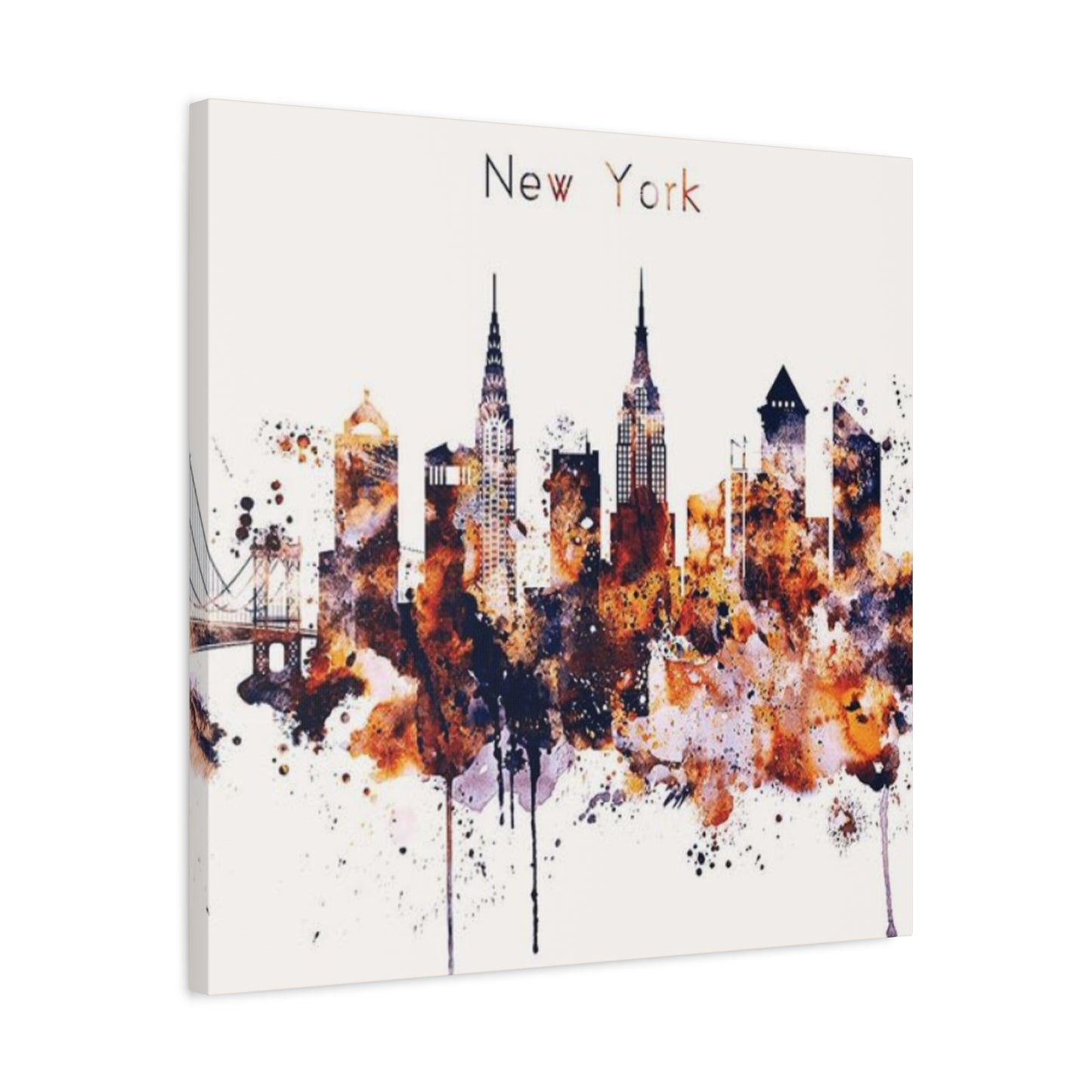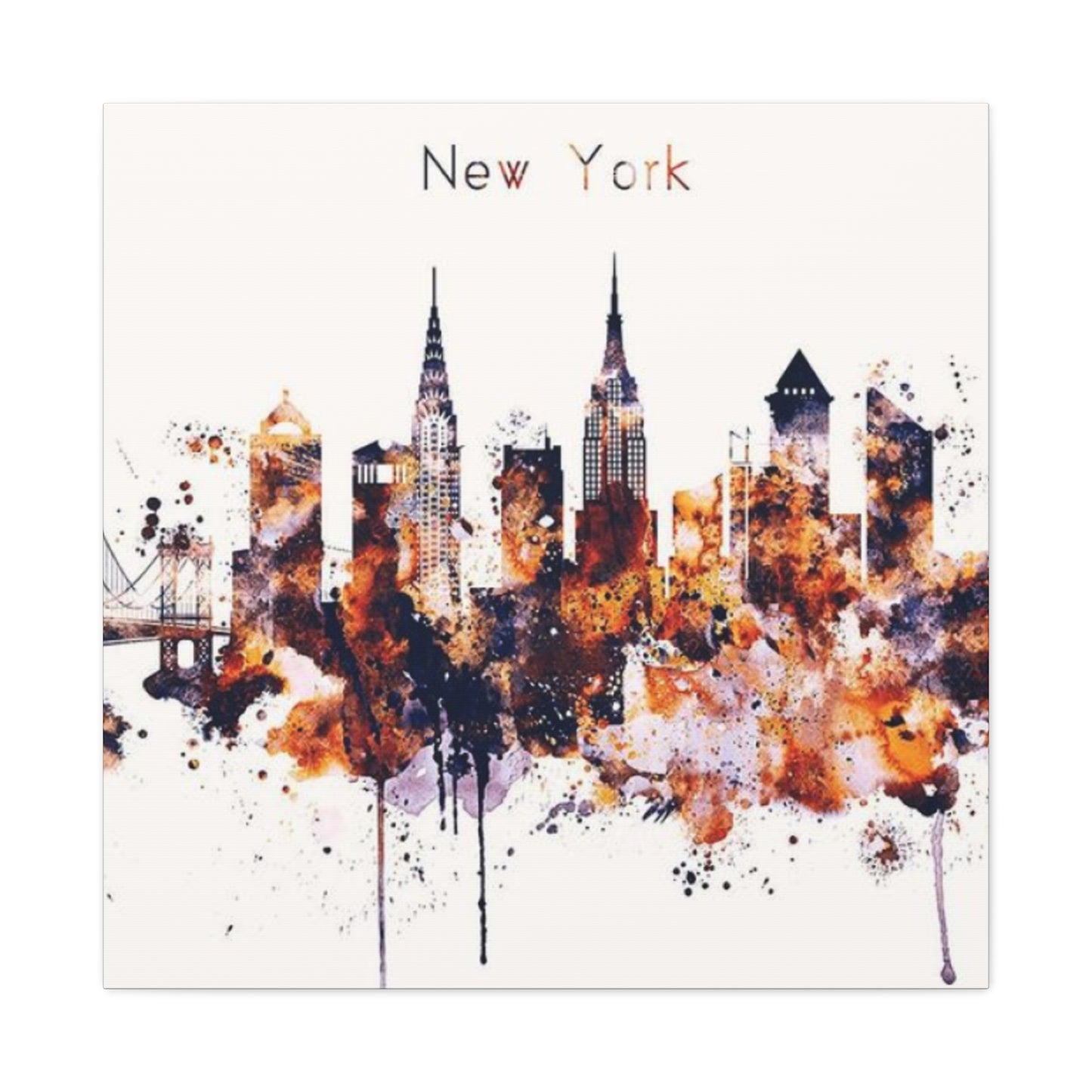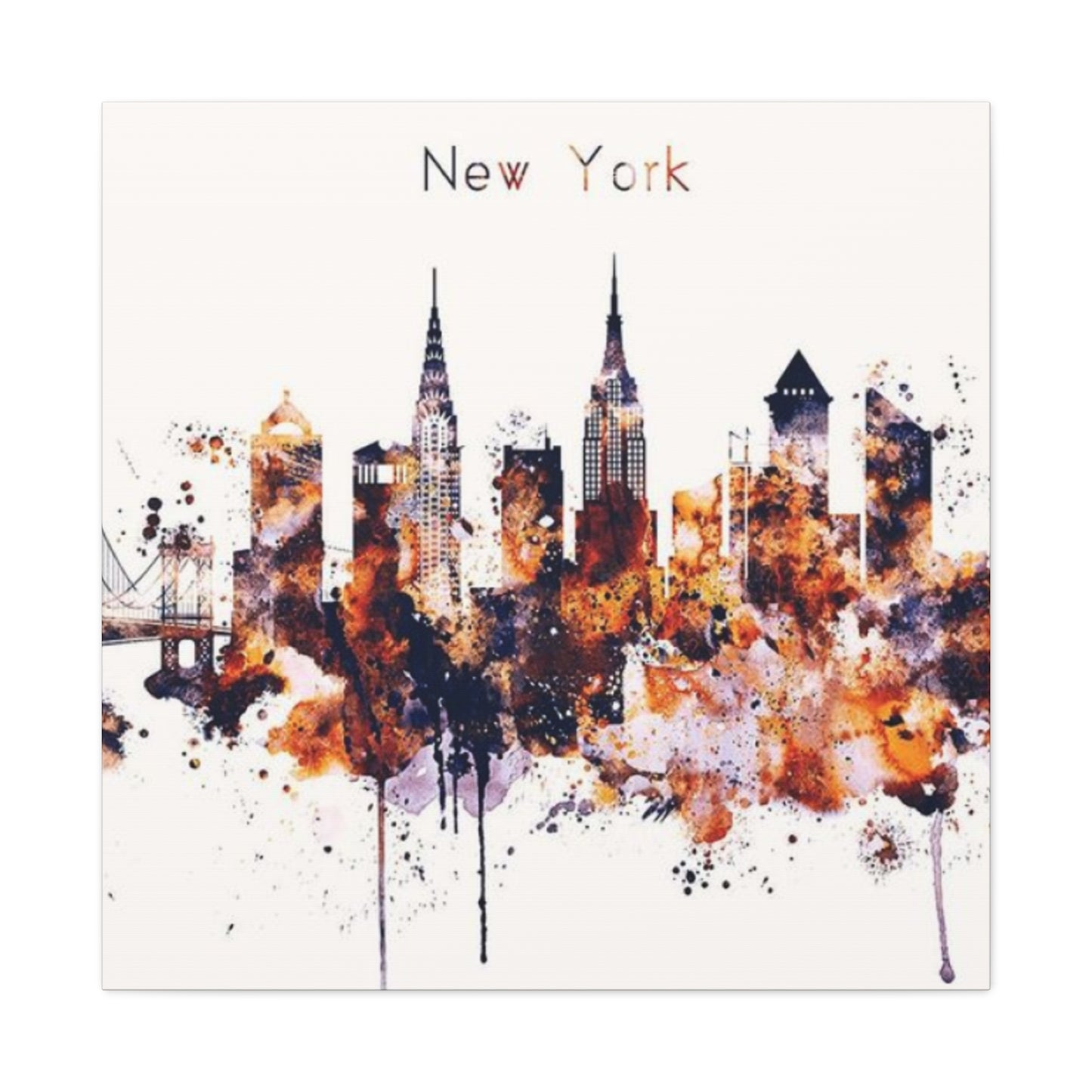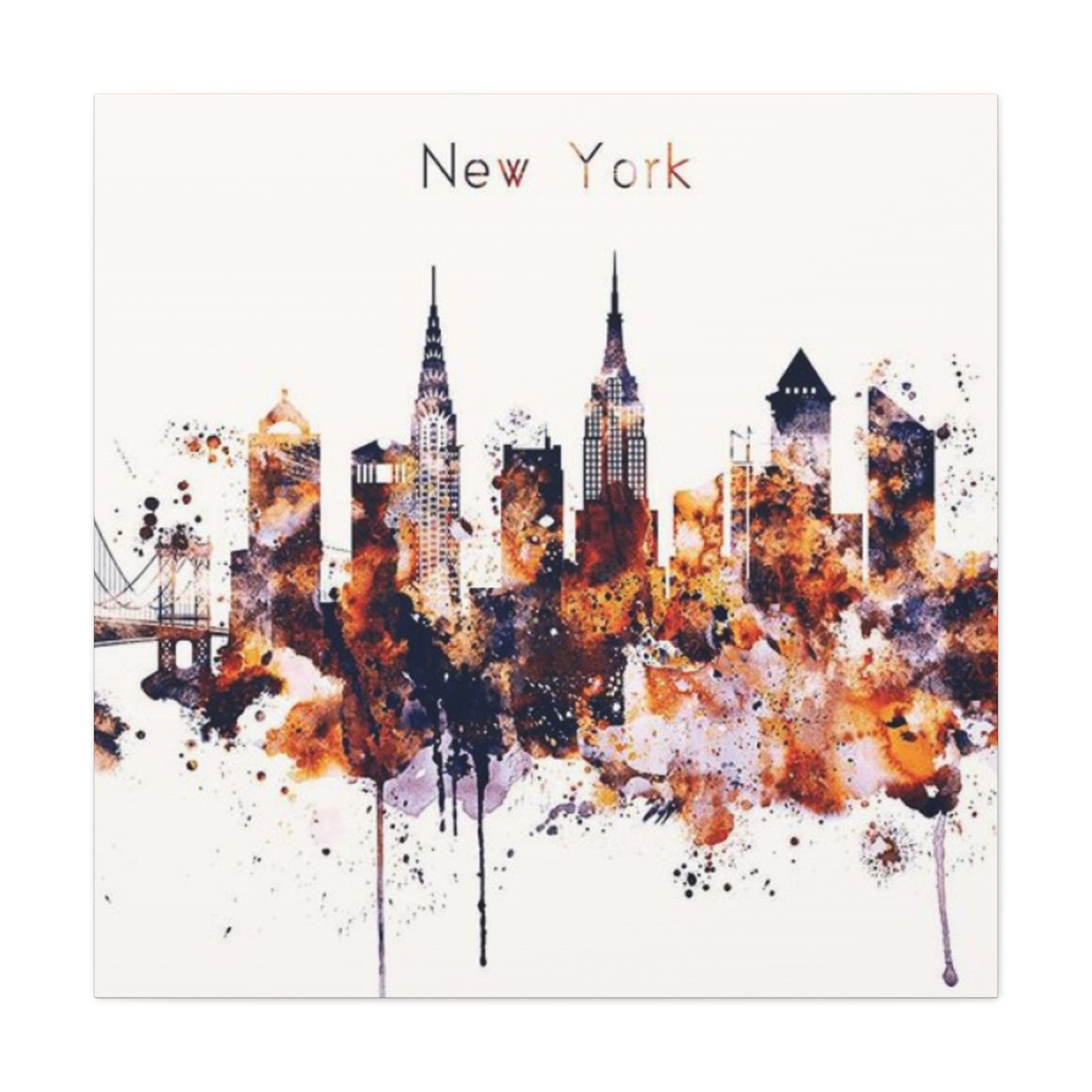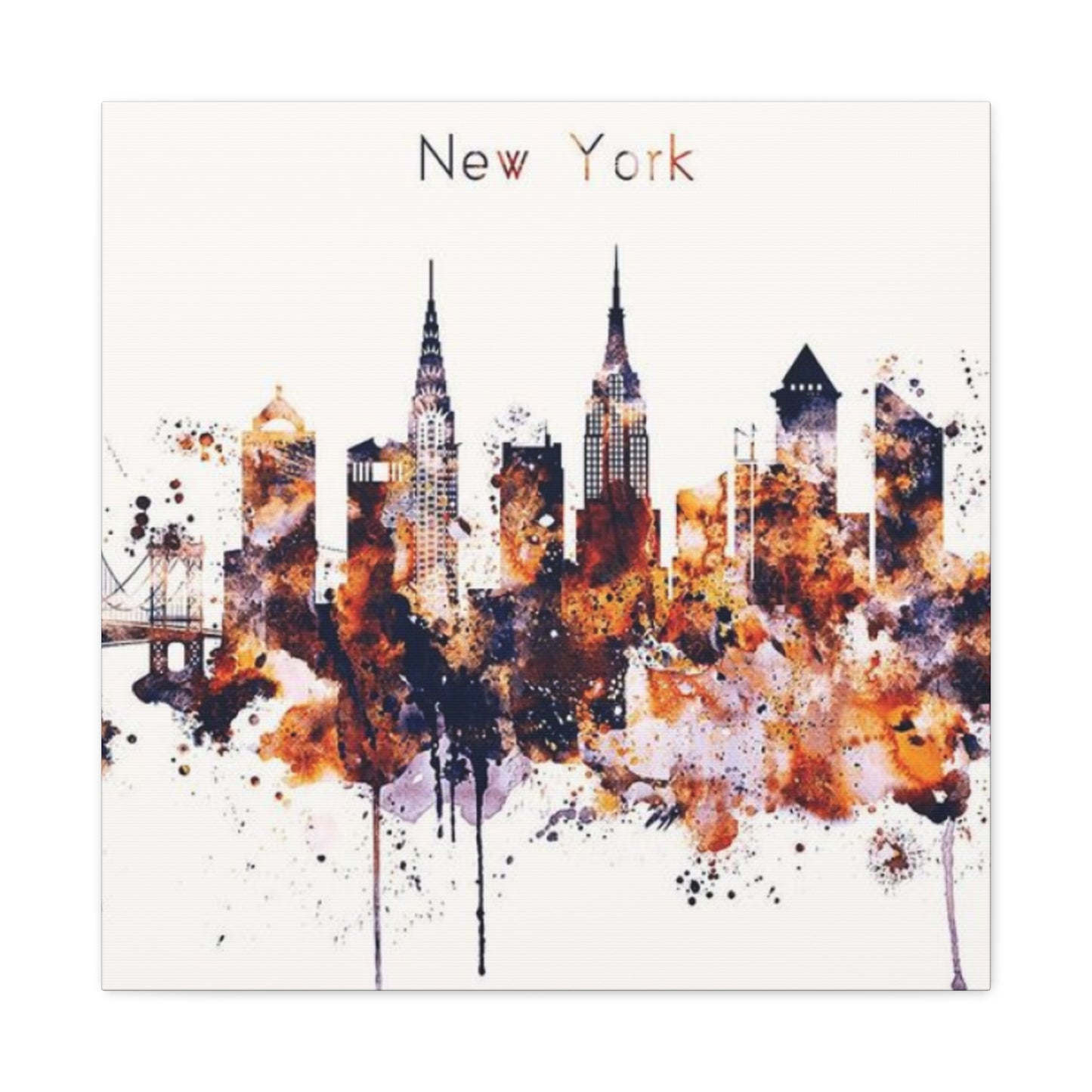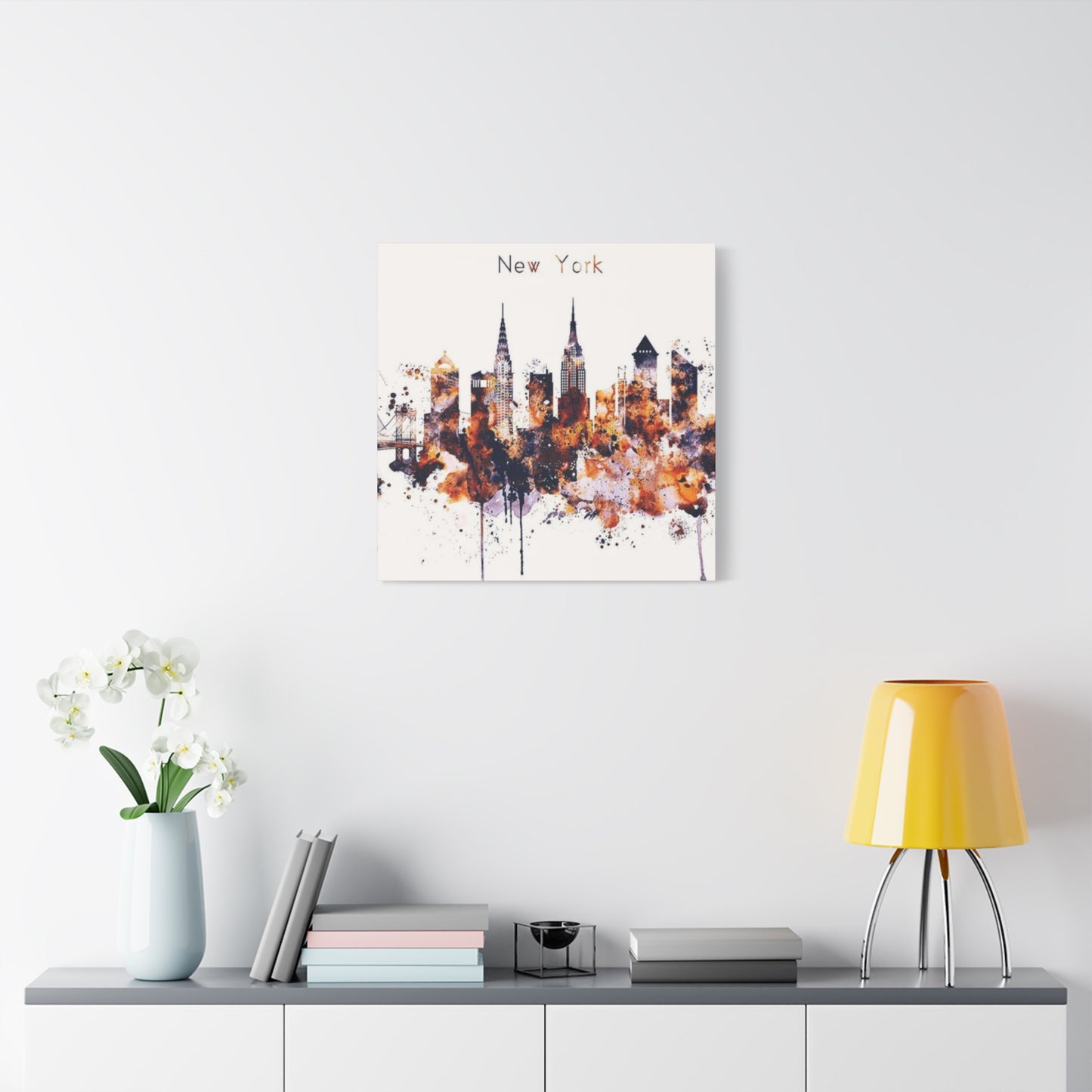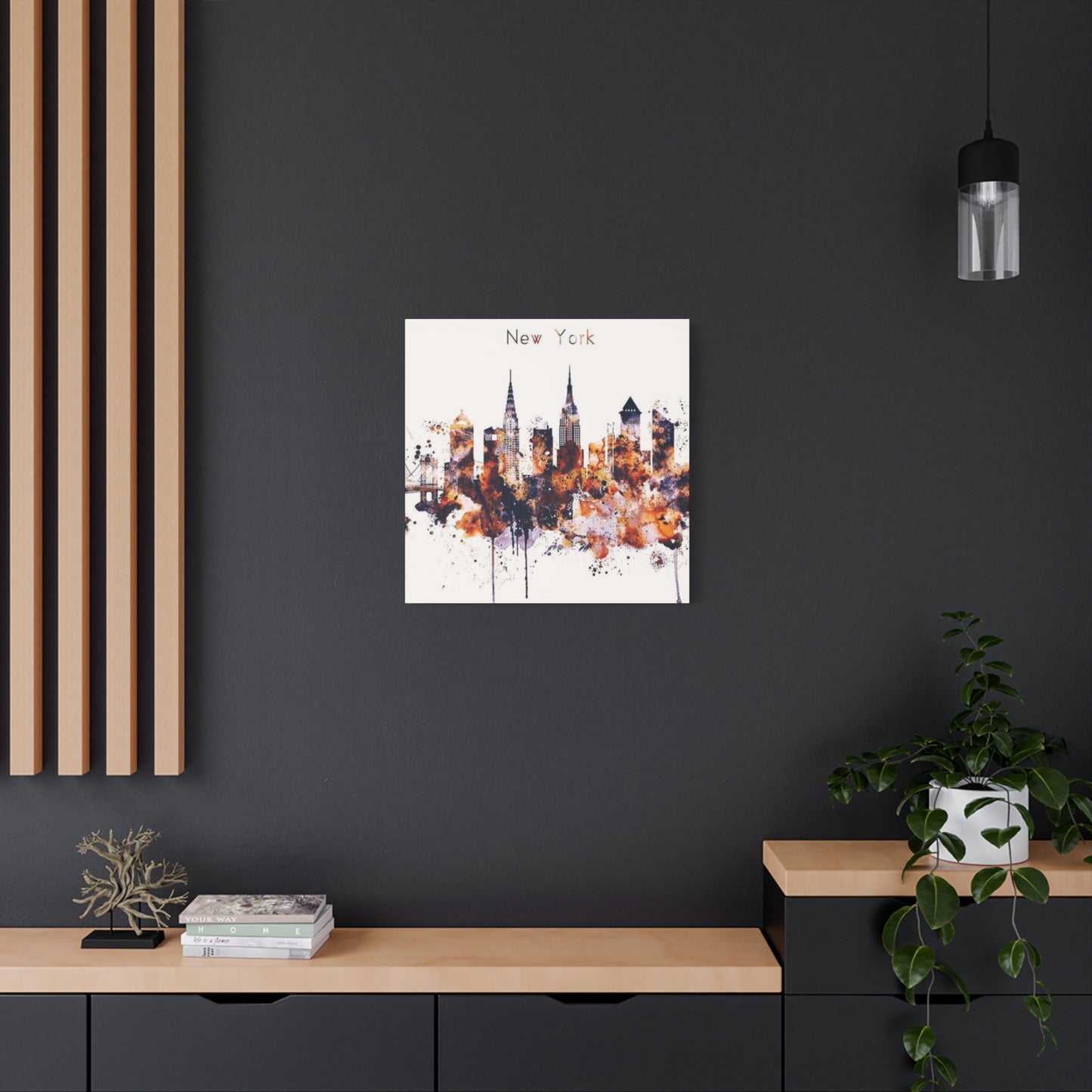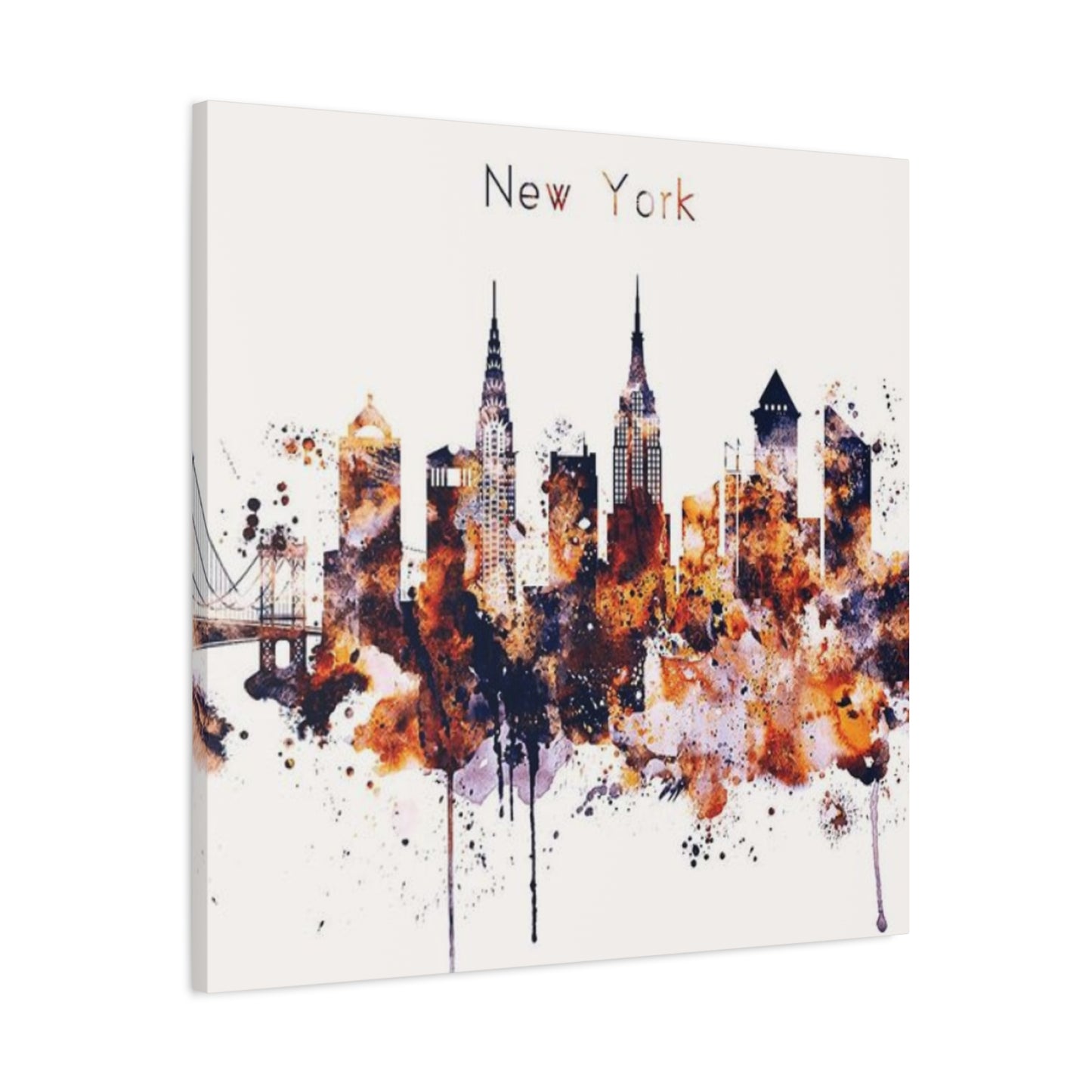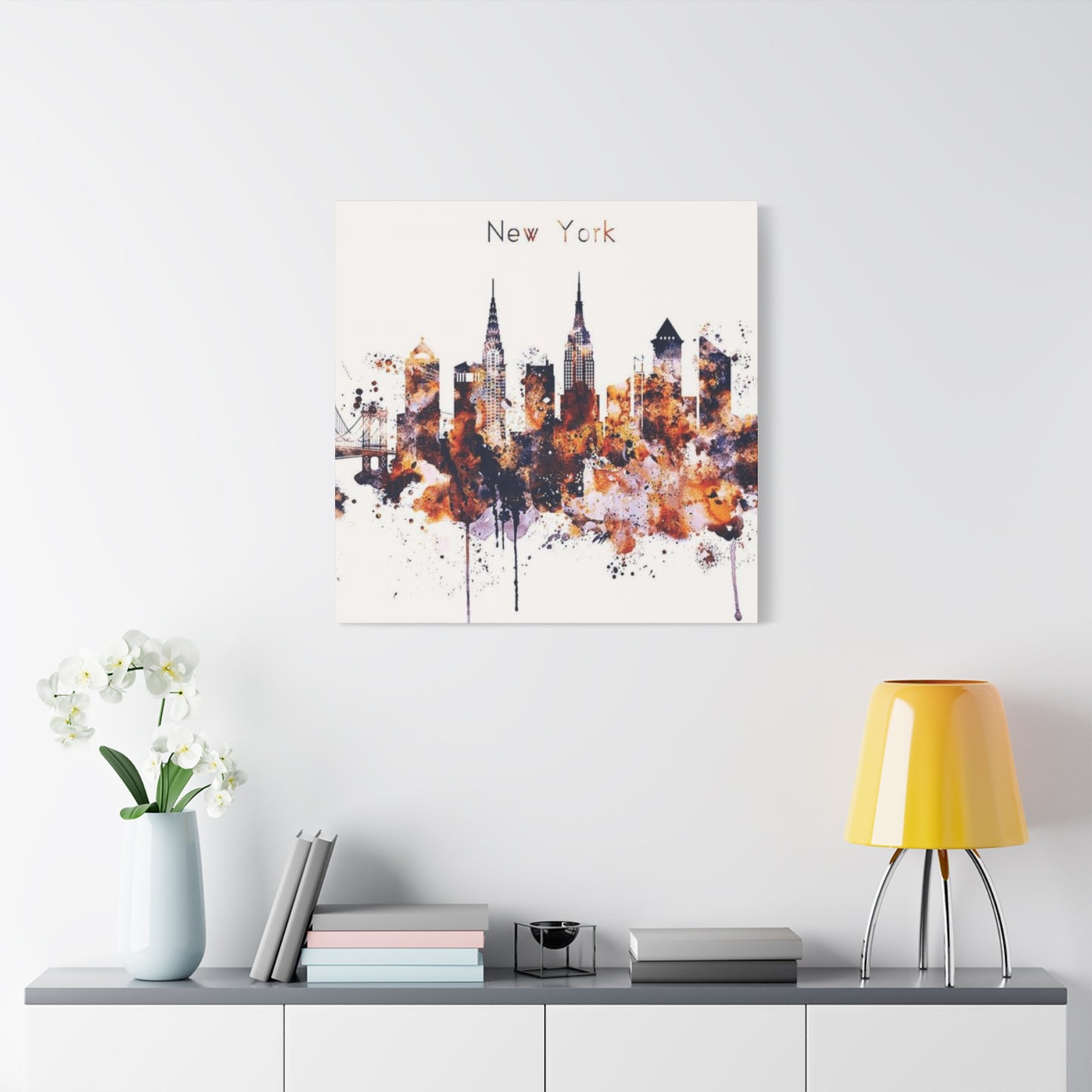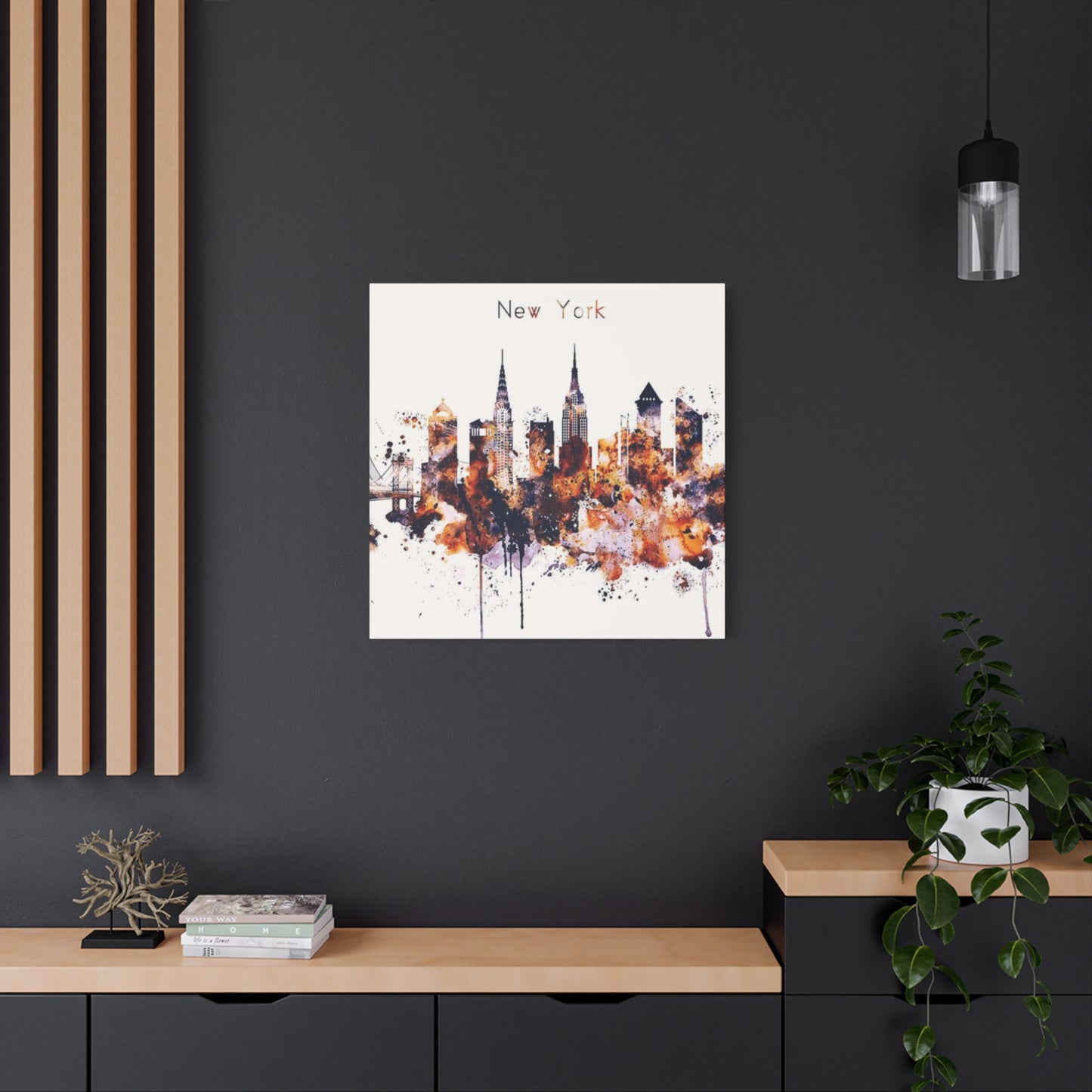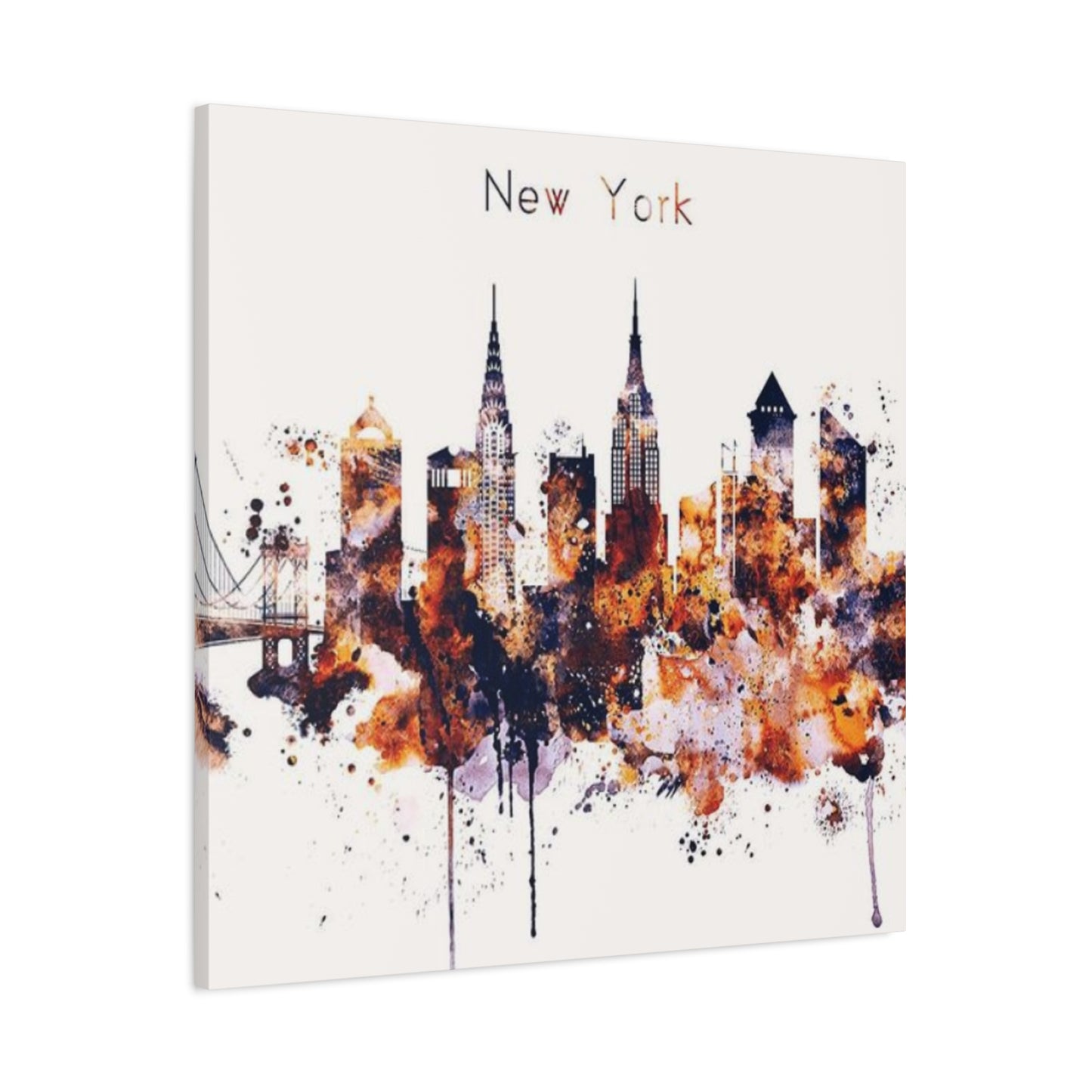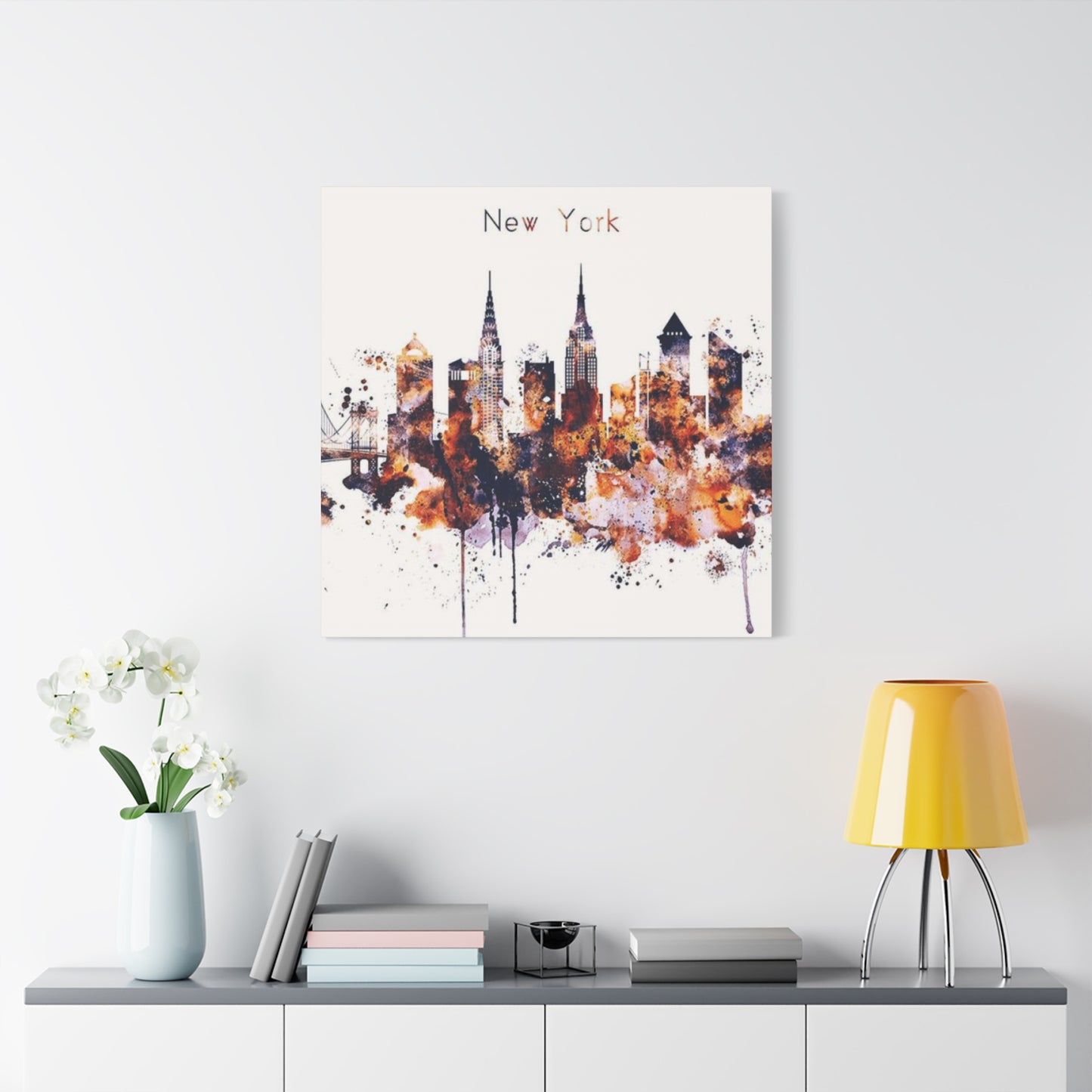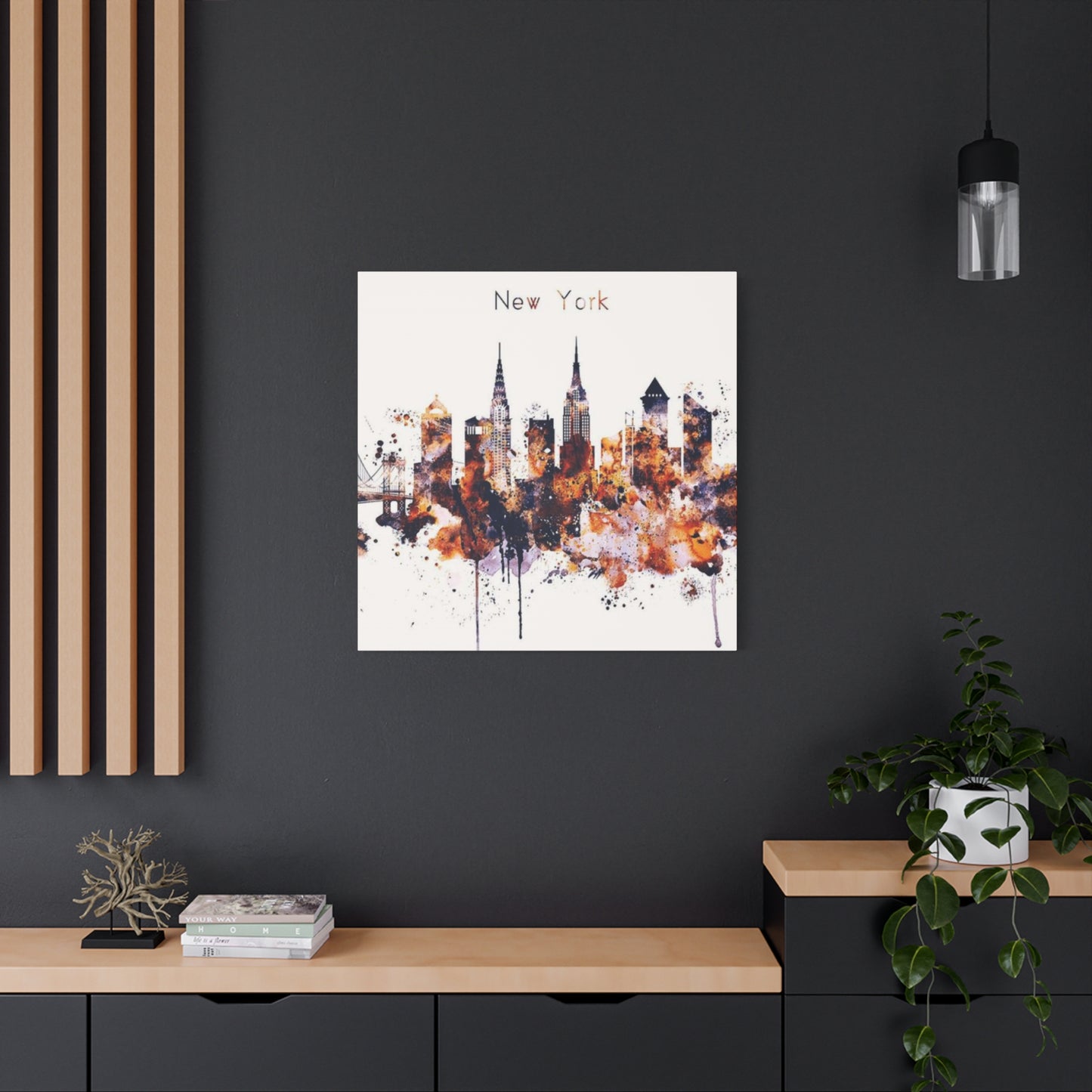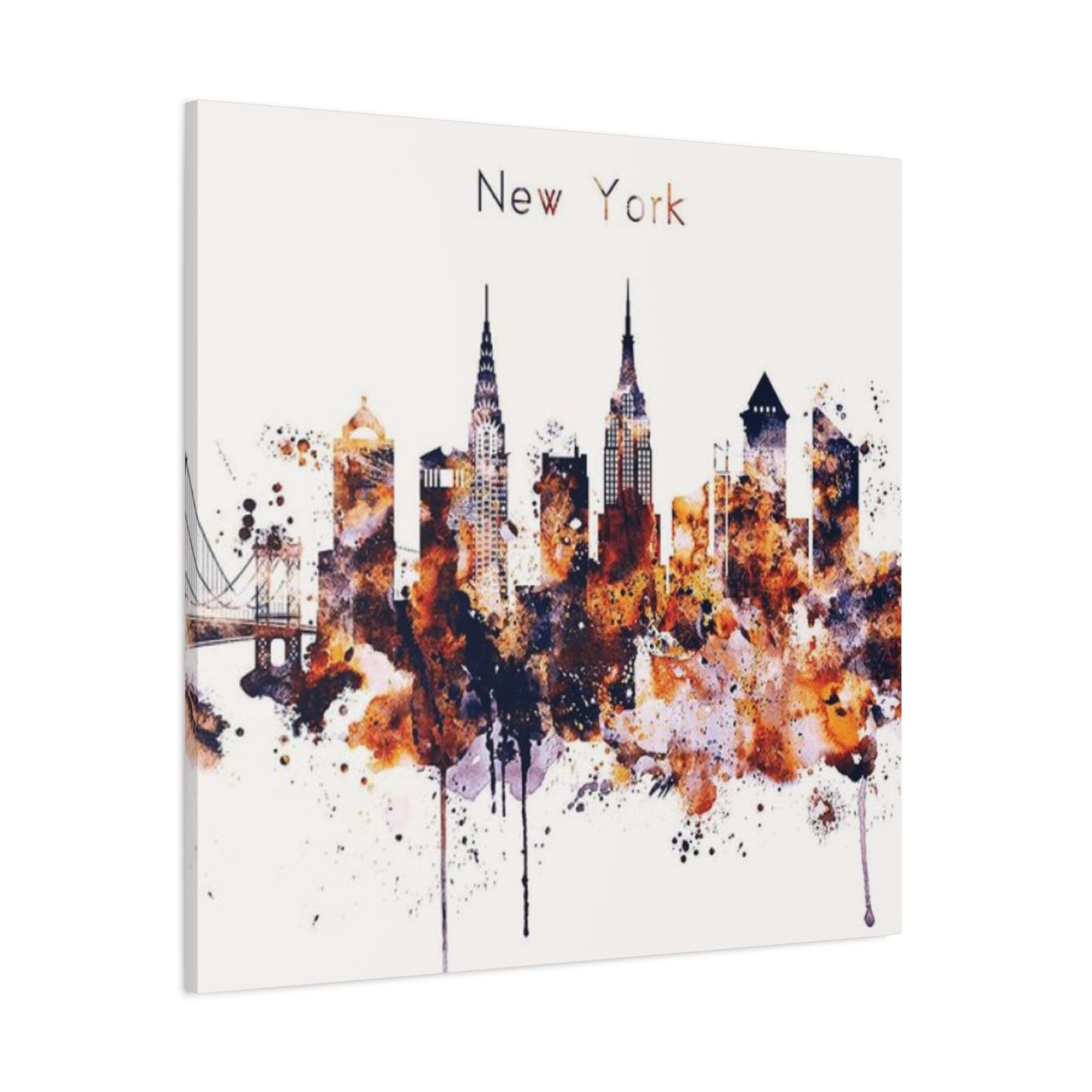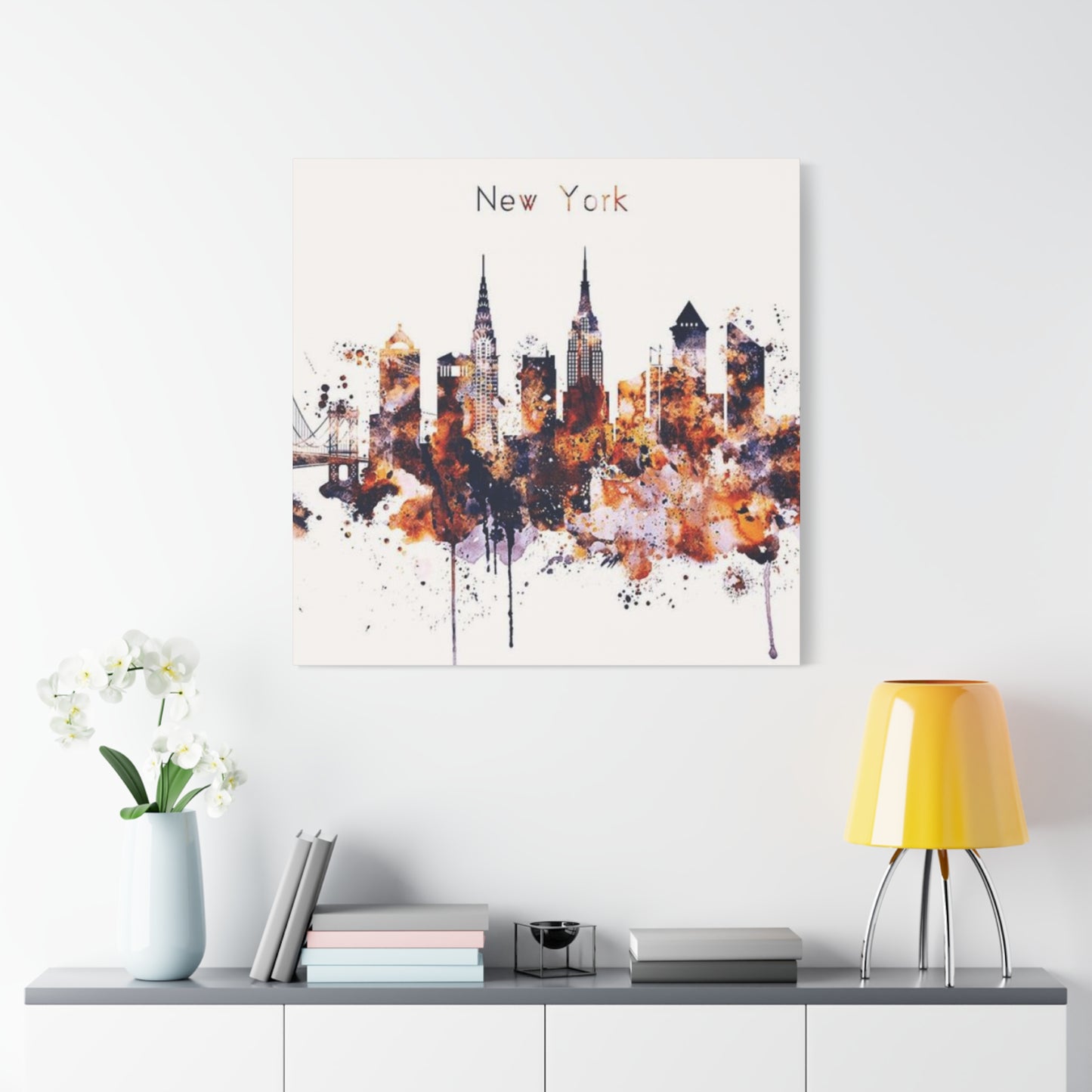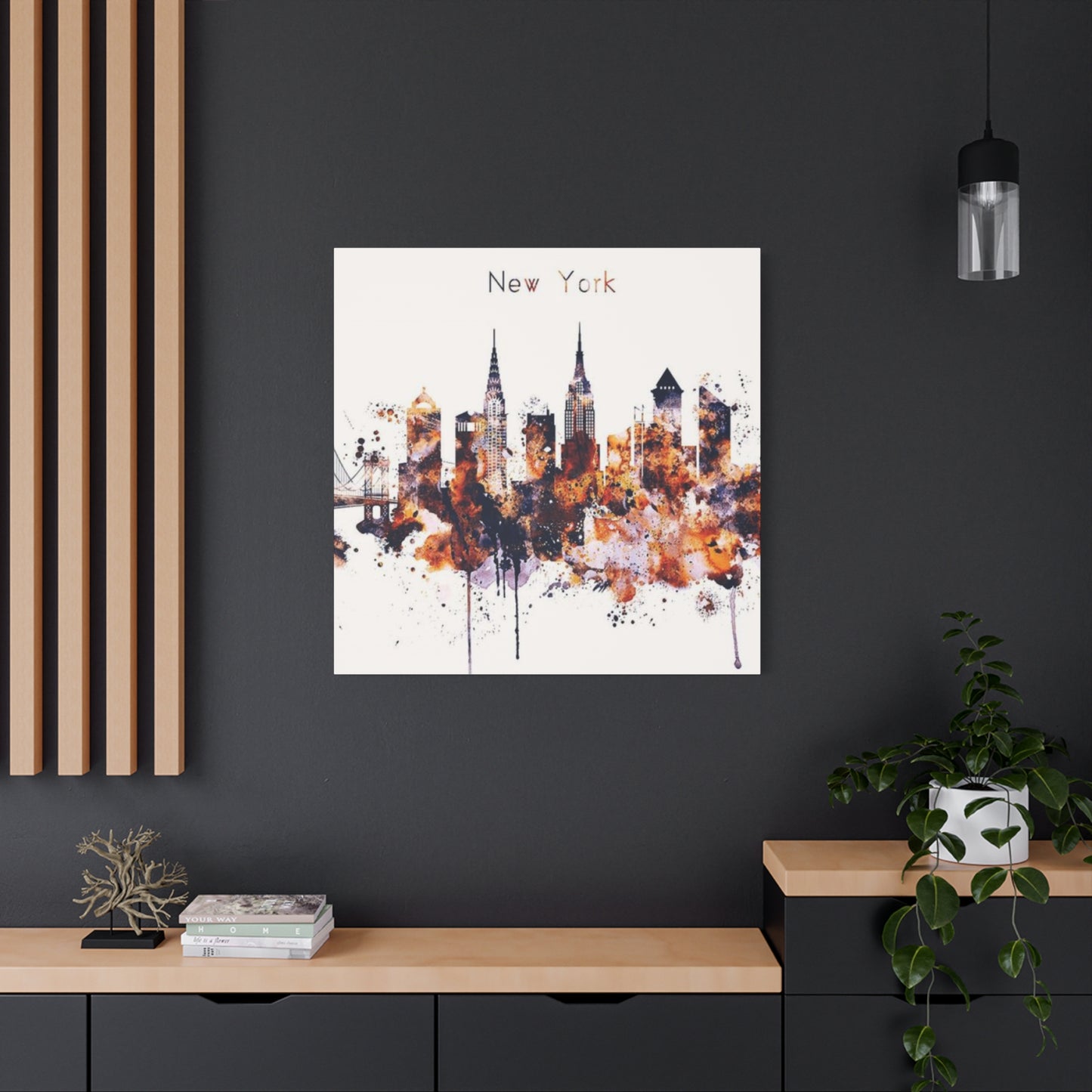Exploring the Artistic Appeal of New York City Skyline Drawing Wall Art Illustrations
The majestic silhouette of New York City has captivated artists, photographers, and design enthusiasts for generations. When transformed into drawing wall art canvas prints, these iconic views become powerful decorative elements that bring metropolitan sophistication into residential and commercial spaces. The artistic representation of Manhattan's towering buildings, Brooklyn's charming architecture, and the Hudson River's serene presence creates visual narratives that resonate with both New Yorkers and admirers of urban landscapes worldwide.
Drawing interpretations of the city's skyline offer a unique perspective that differs from photographic representations. Artists employ various techniques including pen and ink sketches, watercolor illustrations, digital line drawings, and mixed media approaches to capture the essence of this remarkable cityscape. Each artistic method brings its own character and emotional depth to the representation, allowing viewers to connect with the city through different visual languages.
The beauty of skyline drawings lies in their ability to distill complex architectural compositions into essential elements. Artists selectively emphasize certain buildings while simplifying others, creating balanced compositions that guide the viewer's eye across the canvas. This selective representation often highlights landmark structures like the Empire State Building, One World Trade Center, the Chrysler Building, and the distinctive Brooklyn Bridge, creating instant recognition while maintaining artistic integrity.
Canvas prints of New York skyline drawings serve multiple purposes in interior design. They function as conversation starters, reflecting the owner's connection to or admiration for the city. These artworks introduce urban energy into suburban homes, remind expatriates of their beloved city, or inspire travelers who dream of visiting this iconic destination. The versatility of skyline drawings makes them suitable for various interior styles, from modern minimalist spaces to traditional settings that benefit from contemporary accents.
The enduring popularity of New York skyline art stems from the city's symbolic significance in global culture. As a center of finance, fashion, entertainment, and innovation, New York represents ambition, diversity, and endless possibility. Displaying skyline drawings in homes and offices creates an aspirational atmosphere that encourages creativity and forward-thinking. The visual presence of these towering structures serves as a daily reminder of human achievement and architectural innovation.
Historical Evolution of New York Skyline Artistic Representations
The artistic documentation of New York's skyline began long before the city developed its current iconic profile. Early illustrations from the colonial period showed a modest settlement along the southern tip of Manhattan, with church spires providing the only vertical elements breaking the horizontal landscape. As the city grew throughout the nineteenth century, artists began capturing the transformation, documenting the gradual emergence of taller structures that would eventually define the metropolitan character.
The late 1800s witnessed the introduction of steel-frame construction technology, enabling architects to build unprecedented heights. Artists of this era documented the construction of early skyscrapers with fascination and sometimes trepidation. Illustrations from this period show the contrast between traditional low-rise buildings and the new towers that began punctuating the skyline. These historical artworks provide valuable insights into the city's architectural evolution and the public's reaction to these dramatic changes in the urban landscape.
The art deco period of the 1920s and 1930s represents a golden age in New York skyline imagery. The construction of iconic buildings like the Chrysler Building and Empire State Building inspired countless artistic interpretations. Illustrators of this era emphasized the geometric patterns, vertical lines, and decorative elements that characterized art deco architecture. Posters, magazine covers, and commercial illustrations from this period showcased a streamlined, optimistic vision of the city that continues to influence contemporary skyline drawings.
Mid-century modernism brought new aesthetic approaches to skyline representations. Artists embraced simplified forms, bold colors, and abstract interpretations that moved away from strictly representational approaches. The construction of the United Nations Headquarters, the Seagram Building, and other modernist structures provided new subjects for artistic exploration. This period saw increased experimentation with perspective, composition, and the relationship between individual buildings and the overall skyline composition.
The late twentieth century witnessed dramatic changes to the skyline with the construction of the original World Trade Center towers. Artists incorporated these distinctive twin structures into countless skyline representations, making them central to the city's visual identity. The tragic loss of these buildings in 2001 created a significant shift in skyline imagery, as artists grappled with depicting the altered cityscape while honoring the memory of the lost structures. Contemporary skyline drawings often include subtle references to this historical moment while celebrating the resilience represented by the new construction.
Recent decades have seen continued evolution in the skyline's profile with the addition of supertall residential towers, the Oculus transit hub, and One World Trade Center. Contemporary artists incorporate these new elements while maintaining visual connections to historical landmarks. The availability of digital tools has expanded artistic possibilities, allowing creators to produce highly detailed line drawings, stylized vector illustrations, and hybrid approaches that combine traditional and digital techniques. This ongoing evolution ensures that New York skyline drawing wall art canvas prints remain relevant and appealing to successive generations.
Diverse Artistic Styles in Skyline Drawing Representations
Line drawing approaches represent one of the most popular styles for New York skyline wall art. These minimalist interpretations reduce the complex cityscape to essential outlines, creating clean, sophisticated images that work well in contemporary interiors. Artists working in this style carefully consider which details to include and which to eliminate, resulting in compositions that capture the skyline's character without overwhelming visual complexity. The simplicity of line drawings makes them versatile enough to complement various color schemes and design aesthetics.
Detailed architectural illustrations offer a contrasting approach that celebrates the intricate features of individual buildings. These drawings may include window patterns, decorative elements, structural details, and textural variations that provide depth and visual interest. Artists creating these detailed representations often spend considerable time researching architectural specifics to ensure accuracy. The resulting artworks appeal to architecture enthusiasts and those who appreciate the craftsmanship involved in creating highly detailed illustrations.
Watercolor-style drawings combine the fluidity of paint with the structure of line work, creating dreamy, atmospheric representations of the skyline. These artworks often feature soft color washes that suggest the time of day, weather conditions, or emotional qualities associated with the city. The translucent nature of watercolor effects creates layered visual depth, with buildings appearing to recede into the distance or emerge from misty conditions. This style particularly appeals to those seeking artwork with romantic or impressionistic qualities.
Abstract interpretations move away from literal representations, using the skyline as inspiration for compositions that emphasize shapes, colors, and spatial relationships. These artworks might simplify buildings into geometric forms, exaggerate certain elements for dramatic effect, or rearrange the actual skyline configuration to create more dynamic compositions. Abstract skyline drawings appeal to collectors who appreciate contemporary art approaches and interior designers seeking statement pieces that complement bold, modern spaces.
Vintage-inspired skyline drawings recreate the aesthetic of historical illustrations, posters, and travel advertisements. These artworks often employ limited color palettes, simplified forms, and retro typography that evoke nostalgia for earlier eras. The vintage style particularly appeals to those decorating spaces with mid-century modern, industrial, or eclectic design schemes. These drawings celebrate the timeless appeal of the skyline while acknowledging its historical artistic representations.
Silhouette-based approaches reduce the skyline to pure form, creating dramatic black shapes against contrasting backgrounds. These high-contrast images work particularly well in minimalist interiors where strong visual statements are desired without color complexity. Silhouette drawings can be easily customized with different background colors to match specific design schemes, making them practical choices for various settings. The bold simplicity of this style ensures immediate visual impact and easy recognition of iconic building shapes.
Mixed media approaches combine multiple techniques within single artworks, perhaps incorporating ink drawings with digital coloring, collage elements with painted backgrounds, or photographic bases with illustrated overlays. These hybrid works offer visual complexity and textural variety that creates engaging focal points in interior spaces. Artists working in mixed media often experiment with unconventional materials and techniques, resulting in unique pieces that stand apart from more traditional skyline representations.
Selecting the Perfect Skyline Drawing for Your Interior Space
Choosing appropriate skyline drawing wall art requires careful consideration of multiple factors including room size, existing decor, color scheme, and the emotional atmosphere you wish to create. Large-scale canvas prints make bold statements in spacious areas like living rooms, open-concept spaces, or lobbies, while smaller pieces work better in intimate settings such as bedrooms, home offices, or hallways. Understanding the relationship between artwork size and wall space ensures balanced compositions that enhance rather than overwhelm your interior environment.
Color palette selection significantly impacts how skyline drawings integrate with existing decor. Monochromatic black and white drawings offer timeless elegance and versatility, complementing virtually any color scheme while creating sophisticated visual interest. These neutral options work particularly well in spaces where colorful furniture, textiles, or accessories provide chromatic energy. Alternatively, skyline drawings incorporating color can reinforce existing palette choices or introduce accent hues that enliven neutral spaces.
The orientation of skyline drawings affects their visual impact and suitability for different wall spaces. Horizontal panoramic compositions emphasize the expansive nature of the cityscape, working well above sofas, beds, or long furniture pieces. Vertical interpretations draw the eye upward, making them ideal for narrow wall sections or spaces with high ceilings where you want to emphasize verticality. Some contemporary approaches present the skyline at unconventional angles or in multiple panel configurations that create dynamic installations.
Framing choices significantly influence the final presentation of skyline canvas prints. Floating frames create modern, gallery-like presentations with subtle shadows that add dimensional interest. Traditional frames with mats provide classic elegance and protect artwork edges. Frameless gallery-wrapped canvases where the image extends around the sides offer contemporary, streamlined appearances. Your framing selection should align with both the artwork's style and your interior design approach.
The specific skyline view depicted in your chosen artwork matters for personal connection and spatial appropriateness. Downtown Manhattan views featuring the Financial District and One World Trade Center convey corporate sophistication and resilience. Midtown perspectives showcasing the Empire State Building and Chrysler Building evoke classic New York imagery familiar from countless films and photographs. Brooklyn Bridge views combine architectural interest with romantic associations. Wider panoramic views that include multiple boroughs provide comprehensive representations that appeal to those who appreciate the city's full scope.
Lighting considerations affect how skyline drawings appear in your space throughout the day. Artwork placed opposite windows receives natural light that enhances details and colors during daytime hours. Dedicated picture lighting creates dramatic effects during evening hours while ensuring the artwork remains a focal point regardless of natural light conditions. Consider how ambient lighting, accent lighting, and natural light interact with your chosen piece to ensure optimal presentation at all times.
The room's function influences appropriate skyline drawing selections. Living rooms and entertainment spaces benefit from conversation-starting pieces with interesting details that reward prolonged viewing. Bedrooms might feature more serene, simplified skyline interpretations that promote relaxation rather than stimulation. Home offices gain motivational energy from dynamic skyline representations that symbolize ambition and achievement. Guest rooms might showcase welcoming skyline views that introduce visitors to the city's character or remind them of pleasant visits.
Technical Aspects of Canvas Print Production Quality
The foundation of exceptional skyline drawing canvas prints begins with high-resolution digital files or professionally scanned artwork. Image resolution directly impacts the clarity and sharpness of printed details, with higher resolutions enabling larger print sizes without quality degradation. Professional print services typically require minimum resolutions measured in pixels per inch to ensure crisp lines, smooth gradients, and accurate reproduction of fine details. Understanding resolution requirements helps ensure your chosen skyline drawing translates effectively to canvas format.
Canvas material selection affects both the appearance and longevity of printed artworks. Premium cotton canvas provides superior texture and durability compared to synthetic alternatives, offering archival qualities that preserve artwork integrity for decades. Poly-cotton blends offer balanced performance with good texture and more affordable pricing. The canvas weave tightness influences how ink sits on the material surface, with tighter weaves producing sharper detail reproduction and looser weaves creating more textured, artistic appearances.
Printing technology significantly impacts color accuracy, detail reproduction, and overall print quality. Giclée printing represents the premium standard, using archival-quality inks and sophisticated printing processes that produce museum-quality results. This method delivers exceptional color vibrancy, subtle tonal gradations, and long-term colorfastness that resists fading from light exposure. Standard digital printing offers more economical options suitable for artwork where maximum longevity is less critical, though quality varies considerably between service providers.
Color calibration ensures that printed skyline drawings accurately represent the artist's intended colors. Professional print services use calibrated monitors and printers that maintain consistency between digital files and physical prints. Color profiles specific to canvas materials help compensate for how different surfaces absorb and reflect ink, ensuring predictable results. When selecting print services, inquire about their color management processes to ensure satisfaction with final color reproduction.
Protective coatings applied after printing enhance durability and maintain appearance quality over time. UV-resistant varnishes shield canvas prints from fading caused by sunlight exposure, extending the artwork's lifespan significantly. These protective layers also make surfaces more resistant to moisture, dust accumulation, and minor impacts. Matte coatings eliminate glare that can interfere with viewing from certain angles, while gloss finishes enhance color vibrancy and create more dramatic visual impact.
Gallery wrapping techniques determine how canvas extends around the wooden stretcher frame backing. Standard gallery wrap continues the image around all sides, creating finished edges that require no additional framing. Mirror-wrap reflects edge portions of the image around the sides, ensuring no content loss from the front view. Solid color wrapping extends a single color around edges for clean, unified appearances. The wrapping method you choose affects both the artwork's finished appearance and whether additional framing is necessary.
Stretcher frame quality impacts the canvas print's structural integrity and hanging characteristics. Kiln-dried wood frames resist warping from humidity changes that could distort the canvas surface over time. Proper corner joinery ensures frames remain square and stable. Frame depth affects the artwork's dimensional presence on the wall, with deeper profiles creating more pronounced shadow effects. Quality stretcher construction includes appropriate tensioning that keeps canvas taut without overstressing the material, preventing sagging while allowing for natural material behavior.
Interior Design Applications for Skyline Drawing Canvas Prints
Living room installations benefit from skyline drawing canvas prints that serve as primary focal points above sofas or fireplace mantels. Large-scale horizontal compositions work particularly well in these prominent positions, anchoring seating arrangements while introducing metropolitan sophistication. When selecting skyline art for living spaces, consider the room's color palette, furniture style, and the social atmosphere you wish to create. Dynamic, detailed skyline drawings encourage conversation and repeated viewing, while simplified interpretations provide elegant backdrops that don't compete with other design elements.
Dining room applications for skyline artwork create cosmopolitan atmospheres that enhance entertainment experiences. Positioning skyline canvas prints where they're visible from the dining table allows guests to enjoy the artwork during meals and social gatherings. The urban energy conveyed by city skylines complements the convivial nature of dining spaces, subtly suggesting the exciting restaurant culture and culinary diversity that New York represents. Consider coordinating the artwork's color palette with dining room textiles and table settings for cohesive design.
Bedroom implementations of skyline drawing wall art require thoughtful selection to ensure appropriate atmospheres for rest and relaxation. Simplified, minimalist skyline interpretations in soothing color palettes work better than highly detailed or intensely colored pieces that might prove too stimulating. Positioning skyline art on walls visible from the bed creates contemplative viewing opportunities while maintaining bedroom tranquility. For New York residents or frequent visitors, bedroom skyline art can provide comforting reminders of the beloved city without overwhelming the restorative function of sleeping spaces.
Home office environments gain motivational energy from skyline canvas prints that symbolize ambition, achievement, and professional success. The vertical thrust of Manhattan's towers reinforces upward mobility and goal-oriented thinking, making skyline art particularly appropriate for workspaces. Positioning artwork within the sightline from your desk provides inspirational viewing during work sessions. Consider whether you prefer energizing, detailed skyline representations that stimulate productivity or calmer, simplified versions that support focused concentration without distraction.
Entryway and hallway applications make excellent use of vertical skyline compositions that draw the eye upward in these typically narrow spaces. Gallery walls featuring multiple smaller skyline prints create interesting visual journeys through transitional areas. Entry halls particularly benefit from skyline artwork that immediately establishes the home's aesthetic character and the owner's connection to urban culture. Hallway installations transform otherwise underutilized spaces into gallery-like experiences that reward movement through the home.
Kitchen applications for skyline art might seem unconventional but can effectively introduce urban sophistication into these gathering spaces. Modern open-concept designs that integrate kitchens with living areas particularly benefit from cohesive artwork selections that visually connect different functional zones. Skyline prints in kitchens work best in areas away from direct cooking zones where grease and moisture exposure is minimized. Canvas prints treated with protective coatings withstand kitchen environments better than unprotected artwork.
Commercial space implementations leverage skyline drawing canvas prints to reinforce brand identities, create professional atmospheres, or establish location connections. Office reception areas benefit from impressive skyline installations that communicate success and urban sophistication to visiting clients. Hotels and short-term rentals use skyline artwork to celebrate their New York locations and provide guests with visual reminders of the destination's iconic character. Restaurants and retail spaces incorporate skyline art to strengthen New York themes or add cosmopolitan elements to their interior environments.
Understanding Perspective and Composition in Skyline Drawings
Aerial perspectives present skyline views from elevated vantage points, offering comprehensive representations that showcase the relationship between buildings, waterways, and the urban grid. These bird's-eye compositions provide context that helps viewers understand the city's layout and geographical setting. Artists working with aerial perspectives must skillfully manage depth perception, ensuring that foreground elements don't overpower background details while maintaining readable compositions. The elevated viewpoint creates drama through compressed perspective that emphasizes the density and vertical nature of urban development.
Eye-level perspectives place viewers at ground or mid-rise building height, creating more intimate connections with the skyline. These compositions often emphasize the massive scale of skyscrapers by showing them towering above the viewer's position. Eye-level views work particularly well for capturing street-level atmosphere and the human experience of navigating among these architectural giants. Artists using this perspective carefully select which buildings to feature prominently and how to arrange them for maximum compositional impact.
Waterfront perspectives feature skylines viewed from rivers, harbors, or opposite shorelines, incorporating water reflections and nautical elements that add visual interest. The East River, Hudson River, and Upper New York Bay provide classic vantage points that artists have utilized for generations. Water reflections create natural symmetry that doubles the visual impact of the skyline while softening the rigid geometry of buildings. These compositions often include boats, piers, or bridges as foreground elements that establish scale and add narrative interest.
Dramatic low-angle perspectives look upward at towering buildings, creating powerful compositions that emphasize verticality and architectural ambition. These worm's-eye views distort perspective through foreshortening, making buildings appear even taller and more imposing. The dramatic angles create dynamic energy suitable for bold, contemporary interiors. Artists working with low-angle perspectives must carefully manage the distortion to maintain recognizable building forms while exploiting the dramatic possibilities.
Panoramic compositions extend horizontally to capture sweeping city views that include multiple neighborhoods or boroughs. These expansive representations require careful management of visual hierarchy to prevent overwhelming complexity. Artists typically emphasize certain areas while simplifying others, guiding viewers' eyes through the composition in controlled ways. Panoramic skyline drawings work exceptionally well in spaces with long wall stretches that can accommodate horizontal orientations without cropping.
Selective focus compositions zoom into specific skyline sections, featuring a few landmark buildings in detail rather than attempting comprehensive city representation. This approach allows for greater architectural specificity and creates less visually complex images suitable for smaller spaces or minimalist interiors. Selective focus works particularly well when the chosen buildings have strong symbolic associations or distinctive architectural character that represents the broader city essence.
Seasonal and temporal variations show how light, weather, and time of day transform skyline appearances. Sunset silhouettes create dramatic contrasts between darkened buildings and colorful skies. Nighttime representations feature illuminated windows that create pixelated patterns across building facades. Foggy or rainy conditions add atmospheric mystery and romantic qualities. Artists who incorporate these temporal elements create skyline drawings with stronger emotional resonance and narrative possibilities beyond pure architectural documentation.
Color Theory Applications in Skyline Canvas Print Design
Monochromatic schemes using single color families create cohesive, sophisticated skyline representations that easily integrate with diverse interior palettes. Black and white treatments offer timeless elegance with strong contrast that emphasizes form and composition. Sepia or warm gray monochromatic approaches suggest vintage character and nostalgic connections to historical imagery. Cool gray schemes create contemporary, refined atmospheres. Monochromatic skyline drawings work particularly well in spaces where restrained color palettes are desired or where the artwork should complement rather than dominate the interior environment.
Complementary color relationships position opposite hues on the color wheel to create vibrant, energetic compositions. Orange sunsets against blue evening skies exemplify complementary approaches that naturally occur in skyline scenes. Purple shadows contrasting with yellow illuminated buildings create dramatic artificial color schemes that work well in bold, contemporary interiors. Complementary color strategies require careful balance to avoid visual discord, with artists typically allowing one color to dominate while using its complement as accent.
Analogous color schemes use adjacent colors on the wheel to create harmonious, unified appearances. Blues transitioning through blue-greens to greens might represent water, sky, and parkland surrounding the skyline. Warm analogous palettes moving from yellows through oranges to reds create sunset or sunrise atmospheres with cohesive color flow. These harmonious approaches work well in spaces seeking tranquil, coordinated aesthetics rather than high-contrast drama.
Triadic color schemes position three colors equally spaced around the color wheel, creating balanced yet vibrant compositions. Red, yellow, and blue triadic approaches offer primary color energy suitable for playful or retro-inspired skyline interpretations. More sophisticated triadic schemes might use tertiary colors for subtler variation and contemporary appeal. Successfully implementing triadic schemes requires establishing clear hierarchies where one color dominates while others serve supporting roles.
Limited palette approaches restrict color usage to two or three hues, creating stylized, graphic skyline representations with strong visual identities. These restricted palettes force artists to make deliberate choices about color placement, creating compositions where color serves specific communicative or aesthetic purposes rather than attempting realistic representation. Limited palette skyline drawings work exceptionally well in spaces with established color schemes where artwork should reinforce rather than expand the chromatic range.
Gradient applications create smooth color transitions across skyline compositions, often representing atmospheric effects like sunsets, atmospheric perspective, or time progression. Horizontal gradients might show transitions from day to night, while vertical gradients can suggest altitude changes or atmospheric conditions. Digital creation tools make complex gradient applications more accessible, enabling subtle color transitions that add depth and visual interest without requiring multiple distinct colors.
Spot color approaches combine predominantly monochromatic compositions with strategic color accents that draw attention to specific elements. A black and white skyline might feature a single red bridge, a yellow taxi, or blue water as focal points that create visual hierarchy and narrative interest. This technique works well for creating focal points while maintaining the sophisticated restraint of limited color palettes. Spot color applications particularly suit contemporary and minimalist interiors where controlled color usage is preferred.
Customization Options for Personal Skyline Canvas Prints
Personalized skyline compositions allow you to emphasize specific neighborhoods, landmarks, or viewpoints that hold personal significance. Custom commissions can feature the view from your apartment, highlight buildings where you work, or emphasize architectural elements you find particularly compelling. Artists can adjust compositions to include or exclude specific structures, alter their relative prominence, or create idealized arrangements that may not exist in reality but better serve aesthetic purposes. This customization creates truly unique artwork that reflects individual connections to the city.
Text integration adds personal dimensions to skyline canvas prints through coordinates, dates, quotes, or names. Geographic coordinates marking significant locations create subtle personalization that insiders recognize while maintaining the artwork's broader appeal. Meaningful dates commemorate visits, relocations, or important life events connected to New York. Inspirational quotes about the city or urban life add literary dimensions that complement the visual imagery. Personal names or family designations create heirloom quality pieces that celebrate multi-generational connections to the city.
Color customization ensures skyline artwork perfectly complements your specific interior palette. Artists can adjust overall color schemes, background hues, or accent colors to match furniture, walls, or design themes. This customization particularly benefits those with carefully curated interior palettes where standard artwork colors might clash or compete with existing elements. Working directly with artists or print services that offer color adjustments ensures your skyline canvas print enhances rather than compromises your design vision.
Size modifications allow perfect scaling for specific wall spaces, ensuring optimal proportion between artwork and its display location. Custom sizing eliminates compromises between standard dimensions and actual wall measurements, creating truly tailored installations. Unusual wall configurations, architectural features, or specific design requirements may necessitate non-standard sizes that only custom production can accommodate. Discussing exact dimensions with print services ensures technical considerations like resolution and material behavior are properly addressed.
Multi-panel configurations transform single skyline images into diptychs, triptychs, or larger multi-piece installations that create dynamic visual impact. Splitting panoramic skylines across multiple canvases introduces dimensional interest through the spacing between panels and creates more contemporary presentations than single large prints. Multi-panel arrangements offer installation flexibility, allowing spacing adjustments to accommodate specific wall dimensions or design preferences. These configurations work particularly well in large spaces where single images might appear overwhelmed or insufficient.
Mixed medium approaches combine skyline drawings with other elements like typography, abstract designs, or photographic elements that create hybrid artworks. Layering text over skyline silhouettes creates graphic poster-style pieces with urban energy. Combining architectural line drawings with abstract paint applications introduces textural contrast and contemporary artistic sensibilities. These mixed approaches create unique artworks that transcend simple skyline representation, offering more complex visual experiences that reward repeated viewing.
Finishing treatments provide opportunities for additional personalization through protective coatings, texture applications, or embellishment additions. Hand-painted details added to printed bases create affordable originals that combine print consistency with artistic uniqueness. Gel medium applications create paint-like textures that add dimensional interest. Metallic accents highlight specific elements like window illuminations or architectural details. These finishing options bridge the gap between mass-produced prints and original artworks, offering moderate price points with enhanced uniqueness.
The Cultural Significance of New York City in Visual Art
New York's emergence as a global cultural capital stems from its unique position as a center of immigration, innovation, and artistic expression. The city's skyline serves as physical manifestation of these cultural forces, with each building representing investment, ambition, and human achievement. Artists who create skyline representations participate in a long tradition of documenting and interpreting urban transformation, contributing to visual narratives that help society understand its relationship with cities and modernity.
The mythology surrounding New York permeates global consciousness through films, literature, music, and visual art that portray the city as a place of possibility and transformation. Skyline imagery functions as shorthand for these associations, instantly communicating themes of ambition, diversity, creativity, and opportunity. Canvas prints featuring these iconic views allow people worldwide to maintain visual connections with these cultural meanings, bringing metropolitan energy into their personal spaces regardless of physical distance from the actual city.
Architectural innovation finds expression in New York's skyline, which serves as an outdoor museum of building design evolution. From nineteenth-century cast iron facades through art deco masterpieces to contemporary glass towers, the skyline documents changing architectural philosophies, construction technologies, and aesthetic preferences. Artists who interpret these structures create accessible points of entry for non-specialists to engage with architectural history and appreciate the artistic dimensions of building design.
Immigration narratives intertwine with New York's development, as successive waves of newcomers contributed to the city's construction and cultural character. The skyline represents collective achievement, built by laborers from countless nations working together to create something larger than individual contributions. Skyline artwork carries these immigrant stories implicitly, symbolizing the melting pot ideal and multicultural collaboration that defines the city's identity.
Economic symbolism associates New York's skyline with capitalism, financial markets, and corporate power. The Financial District's dense cluster of towers represents concentrated economic might, while corporate headquarters throughout Manhattan showcase business success. This symbolism cuts multiple ways, inspiring some with its representation of opportunity and achievement while provoking others who critique inequality and corporate dominance. Skyline art thus carries political and economic meanings beyond pure aesthetic appreciation.
Resilience narratives gained new significance after September 11, 2001, when the city's ability to recover and rebuild became part of the skyline's symbolic meaning. Contemporary skyline representations that include One World Trade Center carry associations of strength, remembrance, and forward movement. Artists working with post-2001 skylines navigate sensitive ground, honoring loss while celebrating renewal and the indomitable spirit the city represents.
Popular culture saturation means New York's skyline enjoys instant global recognition, appearing in countless films, television shows, advertisements, and media productions. This cultural omnipresence makes skyline imagery accessible to diverse audiences regardless of their familiarity with the actual city. Canvas prints of skyline drawings thus communicate across cultural boundaries, speaking to shared awareness of New York's global significance.
Practical Considerations for Canvas Print Care and Maintenance
Proper hanging techniques ensure canvas prints remain securely mounted while protecting wall surfaces from damage. Wall studs provide the most secure mounting points for larger, heavier canvas pieces, distributing weight safely without risking falls. Drywall anchors rated for appropriate weight loads enable secure mounting between studs when stud placement doesn't align with desired artwork positioning. Professional hanging services ensure proper installation while protecting both artwork and walls from damage.
Environmental considerations affect canvas print longevity and appearance quality. Direct sunlight exposure causes gradual color fading even in prints using archival inks and UV protective coatings. Positioning artwork away from windows or using window treatments that filter UV radiation extends print life significantly. Humidity extremes cause canvas expansion and contraction that may lead to warping or material degradation over time. Maintaining moderate, stable humidity levels protects canvas integrity while preventing mold growth in excessively damp conditions.
Cleaning procedures require gentle approaches that remove dust and surface debris without damaging printed surfaces or protective coatings. Soft, dry microfiber cloths gently remove accumulated dust through light wiping motions that don't press hard against the canvas surface. Slightly damp cloths can address more stubborn surface deposits, though moisture should be minimal and surfaces thoroughly dried afterward. Harsh chemical cleaners, abrasive materials, or excessive moisture risk damaging protective coatings, smudging printed images, or causing canvas discoloration.
Storage requirements for canvas prints not currently displayed protect them from damage during periods between installations. Wrapping canvases in acid-free paper prevents surface scratching and shields from dust accumulation. Storing in flat positions prevents warping from improper weight distribution. Climate-controlled storage areas maintain moderate temperatures and humidity levels that prevent material degradation. Avoiding storage in basements, attics, or other areas with environmental extremes protects long-term condition.
Handling practices prevent accidental damage when moving or installing canvas prints. Holding canvases by frame edges rather than touching printed surfaces prevents oils from hands transferring to artwork. Carrying larger pieces with two people distributes weight safely and prevents dropping. Using clean hands or gloves when handling protects surface coatings from contaminants. Awareness of corners and edges during transport prevents impacts that could damage frame joints or canvas surfaces.
Damage assessment helps determine when professional restoration becomes necessary for damaged canvas prints. Small tears in canvas material may be repairable through backing reinforcement or patching techniques. Separated frame corners often reconnect through proper re-gluing and clamping. Faded colors in UV-damaged prints may necessitate reprinting rather than restoration. Assessing whether damage affects the artwork's structural integrity, visual appearance, or both guides appropriate response strategies.
Professional restoration services address damage beyond simple maintenance, returning compromised canvas prints to display-worthy condition. Conservators trained in canvas repair employ specialized techniques for tear mending, surface cleaning, and structural stabilization. Evaluation services assess damage severity and recommend appropriate treatments. Understanding when DIY approaches suffice versus when professional expertise becomes necessary prevents well-intentioned but potentially harmful amateur repair attempts that could worsen existing damage.
Sourcing Quality Skyline Drawing Canvas Prints
Online marketplace platforms offer extensive selections of skyline drawing canvas prints from numerous artists and print-on-demand services. These platforms provide convenient browsing, easy price comparison, and customer reviews that help assess quality before purchasing. The variety available through online marketplaces ranges from affordable mass-produced prints to premium artist editions with archival quality. Understanding platform policies regarding returns, quality guarantees, and shipping protection ensures satisfactory purchasing experiences.
Artist websites and portfolio platforms connect buyers directly with creators, often offering more extensive customization options and the opportunity to commission original works. Direct artist relationships provide insights into creative processes, inspiration sources, and artistic intentions that enhance appreciation of purchased artwork. Supporting artists directly ensures they receive fair compensation for their work while building collections that reflect genuine artistic vision rather than commercially optimized designs.
Gallery representations bring curatorial expertise to skyline art selection, with gallerists identifying talented artists and ensuring quality standards. Physical galleries allow in-person viewing that accurately reveals colors, textures, and scales better than online images. Gallery staff provide educated guidance about artistic styles, quality considerations, and investment potential. The gallery model particularly suits serious collectors seeking established or emerging artists with proven track records and professional presentation standards.
Print-on-demand services offer affordable access to skyline artwork through automated production processes that minimize inventory costs. These services typically feature extensive design libraries with straightforward ordering processes and predictable quality levels. While print-on-demand options rarely match the quality of professional giclée printing, they provide acceptable results for budget-conscious buyers or temporary decorating needs. Understanding the trade-offs between cost and quality helps set appropriate expectations.
Local art fairs and street markets provide opportunities to discover emerging artists and purchase unique pieces directly from creators. These venues offer price negotiations, immediate possession, and face-to-face interactions that build connections with artists and their work. The selection at local art events tends toward original pieces or small edition prints rather than mass-produced options. Seasonal art fairs and regular street markets in cities with active art scenes provide ongoing opportunities for discovery.
Interior design services and art consultants curate skyline artwork selections tailored to specific projects, handling sourcing, quality verification, and installation coordination. These professionals bring expertise about which artistic styles, sizes, and placements best serve particular interior environments. The convenience of comprehensive service comes at premium prices but eliminates the time investment and uncertainty of independent searching. Design professionals particularly benefit clients undertaking complete renovations or furnishing entire homes.
Auction platforms and resale markets offer opportunities to acquire skyline prints from previous owners, sometimes including out-of-print editions or vintage pieces unavailable through primary markets. Auction settings introduce competitive dynamics that may drive prices above or below typical retail levels depending on demand and availability. Careful authentication protects against purchasing counterfeit prints misrepresented as legitimate editions. Understanding provenance and condition documentation ensures informed purchasing decisions in secondary markets.
Conclusion
New York City’s skyline is more than a collection of buildings—it is an enduring symbol of ambition, creativity, and metropolitan elegance. New York City Skyline Drawing Wall Art Illustrations capture this iconic panorama, transforming walls into immersive reflections of urban energy and architectural beauty. These artworks do more than decorate; they translate the city’s dynamic essence into visual form, allowing you to experience the vibrancy, sophistication, and timeless appeal of NYC every day.
Skyline drawings hold a unique charm because they combine precision, perspective, and artistic interpretation. Each illustration showcases the interplay of light and shadow across towering structures, bridges, and iconic landmarks, highlighting the rhythm and geometry of Manhattan’s architecture. Whether rendered in crisp line work, soft pencil sketches, or bold ink contrasts, skyline art conveys both the physical grandeur and emotional resonance of the city. By incorporating these pieces into your home or office, you invite not only aesthetic beauty but also a daily reminder of human ingenuity and urban inspiration.
One of the most compelling qualities of NYC skyline wall art is its versatility. Large-scale drawings can dominate a living room or office wall, becoming a dramatic centerpiece that draws attention and establishes a sophisticated tone. Smaller illustrations, framed or grouped in gallery arrangements, provide layered storytelling, allowing multiple perspectives of the city to unfold across your space. From minimalist monochromatic sketches to detailed architectural renderings, skyline illustrations adapt seamlessly to modern, industrial, vintage, or eclectic décor, offering style without sacrificing substance.
Color, texture, and medium play pivotal roles in bringing these illustrations to life. Monochrome sketches emphasize elegance, contrast, and clarity, allowing viewers to appreciate the architectural lines and forms. Subtle washes of color or watercolor backgrounds add depth and mood, evoking the shifting light of sunrise or the city’s glittering nighttime skyline. Textured paper, layered strokes, and ink gradients give dimension and movement, enhancing the sense that the city is alive, bustling, and constantly evolving. The artistry behind each piece ensures that it communicates both technical mastery and emotional impact.
Lighting further enhances the effect of skyline art. Ambient lighting softly illuminates intricate details, while focused spotlights can accentuate specific buildings or elements, creating a dynamic visual experience. Sunlight filtering through a room can add natural highlights, transforming the drawing into a living representation of the city’s energy. The interplay of light and shadow mirrors Manhattan itself—a city defined by contrasts, ambition, and constant motion—making the artwork feel both authentic and inspiring.
Beyond visual appeal, NYC skyline drawings carry symbolic significance. The city represents innovation, resilience, and opportunity, and displaying its skyline in your home fosters a sense of motivation, sophistication, and connection to global culture. Each glance at these illustrations can inspire creativity, productivity, and reflection, reminding viewers of the possibilities inherent in urban life and human achievement. For artists, professionals, or anyone drawn to cosmopolitan aesthetics, these pieces serve as daily affirmations of ambition, vision, and style.
Decoratively, skyline wall art allows for endless creativity. A single, large drawing can anchor a room, complementing minimalist furniture or contemporary design. A curated series of smaller illustrations can guide viewers through architectural highlights, historical landmarks, or artistic interpretations of the skyline, creating a narrative journey along your walls. Paired with metallic accents, neutral tones, or modern furnishings, the artwork enhances both the visual and emotional atmosphere of the space.

















